Oral
CEST
ISMRM & ISMRT Annual Meeting & Exhibition • 10-15 May 2025 • Honolulu, Hawai'i

| 15:30 |
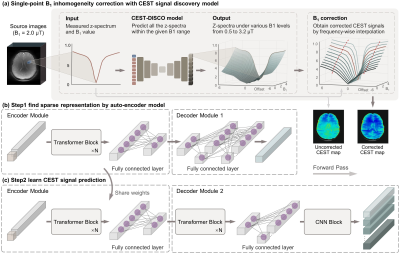 |
1353. A
deep learning-driven CEST signal discovery model for transmit
inhomogeneity correction with single-B1 acquisition

J. Xu, X. Yong, Z. Dai, Y-C Hsu, K. Chan, Y. Zhang
Zhejiang University, Hangzhou, China
Impact: Our proposed deep learning-driven signal
discovery model facilitates precise B1-inhomogeneity
corrected CEST imaging with single-B1 acquisition,
while also offering extending applications, such as improved
CEST quantification via additional predicted signals.
|
| 15:42 |
 |
1354. Double-step
R1rho-based LOrentzian Fitting (DROF): a new CEST analysis
approach and its comparison with existing methods

H. Zhang, J. Wang, S. Zeng, P. Cai, Z. Wang, B. Qiu, J.
Huang
The University of Hong Kong, Hong Kong, China
Impact: We
proposed a double-step R1rho-based LOrentzian Fitting (DROF)
method for extracting 5-pool CEST parameters at 3T. DROF
exhibits enhanced specificity and stability compared to
other methods, suggesting its potential to promote wider
CEST applications at 3T.
|
| 15:54 |
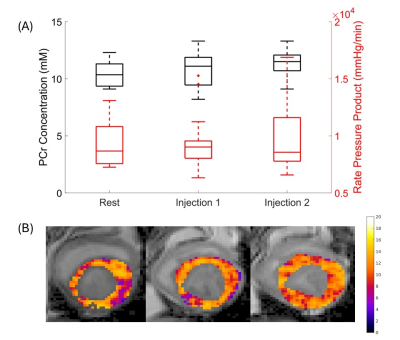 |
1355. Quantitative
assessment of cardiac oxidative metabolism under physiological
and pharmacological stress using CEST imaging and MRS
Q. Huang, C. Berberet, C. Eldeniz, R. Wahidi, L. Peterson,
T. Schindler, P. Woodard, J. Zheng
Washington University in St. Louis, St. Louis, United States
Impact: The
feasibility of tracking PCr changes in different
physiological states is critical for the diagnosis of heart
tissue dysfunction. The validation of MRS consolidates the
accuracy of the CEST results.
|
| 16:06 |
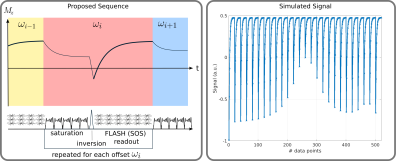 |
1356. Dynamic
transitions for fast joint determination of CEST-Rex and T1

M. Huemer, D. Mackner, N. Scholand, C. Stilianu, M.
Uecker, M. Zaiss, R. Stollberger
Graz University of Technology, Graz, Austria
Impact: The proposed method enables faster and more
accurate quantification of the CEST effect, due to inherent
compensation for B0,
T1,
and saturation time. Fast quantitative CEST maps provide new
insights different from$$$\,T_1\,$$$influenced APTw
or$$$\,MTR_{asym}\,$$$measurements and can therefore lead to
increased$$$\,$$$specificity.
|
| 16:18 |
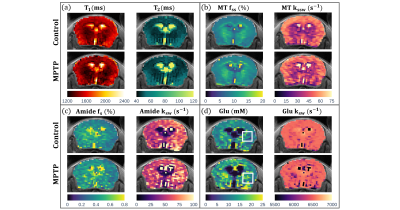 |
1357. Multi-Metabolite
AI Boosted CEST-MRF in an MPTP Mouse Parkinson’s Model
H. Shmuely, M. Rivlin, O. Perlman
Tel Aviv University, Tel Aviv, Israel
Impact:
A multi-metabolite CEST-MRF quantitative approach was developed and validated using a mouse PD model. The extensive semisolid MT, amide and glutamate proton-exchange maps are expected to aid in the diagnosis and characterization of Parkinson’s disease. |
| 16:30 |
 |
1358. 3T
vs 7T CEST contrast comparison in a prospective diagnostic study
in glioma patients: insights into age dependence and tumor
subtype sensitivity
M. Capiglioni, M. Fabian, R. McKinley, R. Wiest, M. Zaiss,
R. Hoeppner, J. Slotboom, P. Radojewski
Institute for Diagnostic and Interventional Neuroradiology, University of Bern, Bern, Switzerland
Impact: This study shows that 7T CEST enhances
age-dependent contrast but offers limited advantage for
tumor subtyping over 3T, elucidating CEST’s diagnostic
potential. Future research can use age-related CEST changes
at 7T to differentiate normal from pathological aging in
clinical neuroimaging.
|
| 16:42 |
 |
1359. When
CEST meets diffusion: Multi-echo diffusion-encoded CEST MRI to
measure intracellular and extracellular CEST signal distribution
S. Z. Mahmud, H-Y Heo
The Johns Hopkins University School of Medicine, Baltimore, United States
Impact: The
multi-echo dCEST imaging technique could isolate flow
and blood-related bias and especially measure extracellular
acidosis and intracellular alkalization in tumors.
|
| 16:54 |
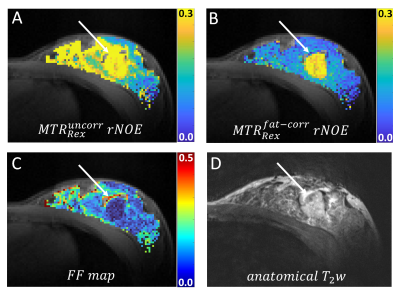 |
1360. Fat-corrected
rNOE-CEST contrast for breast cancer imaging
P. Menshchikov, P. Boyd, L. Loi, N. Kempa, M. Ladd, H-P
Schlemmer, P. Bachert, D. Paech, A. Korzowski
German Cancer Research Center (DKFZ), Heidelberg, Germany
Impact: The significant elevation in fat-corrected
MTRRex rNOE contrast along with the strong correlation with
a tumor proliferation marker indicate the potential to use
rNOE imaging as a valuable non-invasive imaging biomarker
for breast cancer diagnosis, treatment planning, and
monitoring.
|
| 17:06 |
 |
1361. Fluid-suppressed
APTw and NOEw MRI as Protein-Related Biomarkers for
Differentiating IDH Status in Gliomas
S. Casagranda, C. Cadin, O. Dipasquale, L. Nichelli, B.
Mathon, M. Sanson, M. Zaiss, S. Lehéricy, F. Branzoli
Olea Medical, La Ciotat, France
Impact: The results demonstrated the potential of
fluid-suppressed APT-weighted MRI as a noninvasive method to
improve diagnostic precision in predicting IDH status and
optimize clinical management of gliomas.
|
| 17:18 |
 |
1362. CEST
MRI for diagnosing the activity of thyroid-associated
ophthalmopathy: Added value to magnetization transfer imaging
Y. Wang, J. Dai, Q. Wen, Y. Cui, Y. Xiao
Department of Radiology, Second Affiliated Hospital of Naval Medical University, shanghai, China
Impact: TAO is treated differently according to
activity. Our results showed CEST may measure the
pathological change which provided significant added value
to magnetization transfer imaging for diagnosing TAO
activity. The application of CEST would be beneficial for
TAO treatment selection.
|
The International Society for Magnetic Resonance in Medicine is accredited by the Accreditation Council for Continuing Medical Education to provide continuing medical education for physicians.